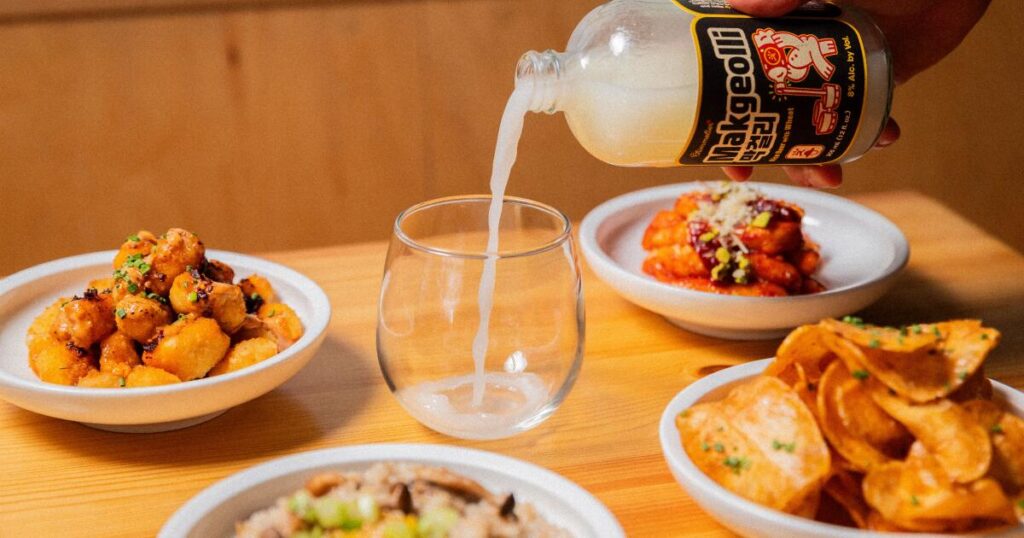Your Local SEO and Digital Marketing Experts in San Diego County
As the granddaughter of Korean rice farmers who brewed rich, viscous makgeolli to keep their six sons sated while planting in the fields, my journey of learning about and consuming the modern craft incarnation of this intangible Korean cultural artifact has felt like unearthing a birthright.
One of Korea’s oldest alcoholic beverages, makgeolli has an interesting provenance: This unfiltered rice wine is made from the dregs at the bottom of a fermentation vessel, which were historically left for peasants after wealthier imbibers took the clear cheongju rice wine that rose to the top. Its popularity (and legality) has fluctuated over the years, but in recent decades the beverage has resurfaced and begun to attract broader attention, with Los Angeles rising as a destination for small-batch artisanal makgeolli.
Sometimes compared to natural wine, sour beer or kombucha, the flavor of makgeolli is a combination of sweet, savory and sour with a fizziness that can be eye-wideningly invigorating. Usually under 10% ABV, the drink belongs to a larger class of alcoholic beverages from Korea that are finding popularity in the United States, also called “Ksool” (K for Korean, and sool meaning alcohol), including soju.
Mass-produced brands often pasteurize their makgeolli, stripping it of enzymes and probiotics, but a new crop of makgeolli producers are crafting the beverage with care. That often involves a long process of air-fermenting nuruk, a pressed-grain fermentation starter; steaming rice; mixing the nuruk, steamed rice and water; and fermenting in a vessel of choice for one to six weeks.
After fermentation, many brewers mature the makgeolli for several days in a cold room.
“Usually the acidity mellows down during the maturation process, and the flavor finds better balance,” says Anselmo Jinyong Yang, founder and head brewer of Danvi, an L.A.-based Korean rice brewery.
After maturation, some brewers dilute their makgeolli with water to achieve a specific ABV. Before drinking, makgeolli is swirled so that it naturally separates, with the sediment drifting down to the bottom.
Katianna Hong, who co-owns Yangban, a modern Korean American restaurant in the Arts District, with her partner John Hong, was surprised the first time she tried makgeolli from Nasung, a Fullerton distillery and brewery that specializes in traditional Korean alcoholic beverages.
“That was the first time I had a makgeolli that I could see myself drinking because I wanted to, and not because it was being poured into six cups and passed around,” Hong says. “I love how balanced it is — how clean and simple, yet nuanced at the same time.” The Hongs soon contacted Nasung founder David Faulk, asking to add his Two Flowers Makgeolli to their menu.
At Jilli, a sool jib (literally, drinking house) in Koreatown, makgeolli is showcased through tasting flights. “Our guests know about makgeolli and come to Jilli just to drink it,” says co-owner Dong Hyuk “Dustin” Lee. He believes makgeolli, like sake, will branch out beyond Korean restaurants, to New American and other fine-dining restaurants. “It will take time, but I’m confident makgeolli will be on the drink lists of different cuisines,” Lee says.
Traditionally, Koreans pair makgeolli with pajeon, a flat savory pancake, but it’s also consumed with other types of jeon, meats like bo ssam, Korean barbecue and bulgogi, bindaetteok, kimchi and hongeo, a fermented skate fish. Restaurants such as Yangban are increasingly pairing the beverage with modern Korean dishes.
“Makgeolli mirrors, for us, a lot of the ethos of our cooking and our approach to Korean American culture,” says John Hong. “For us, it’s the juxtaposition of new ideas and new thoughts while paying attention to the past.”
Here are four L.A. restaurants and one local bottle shop where you can sample artisanal makgeolli from a variety of emerging small brands.

